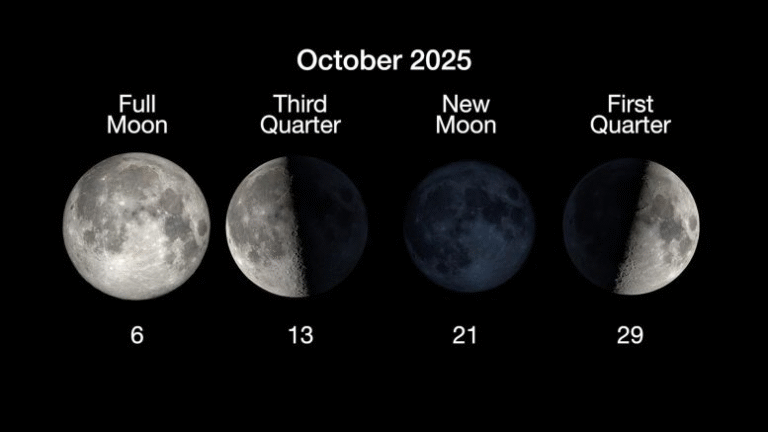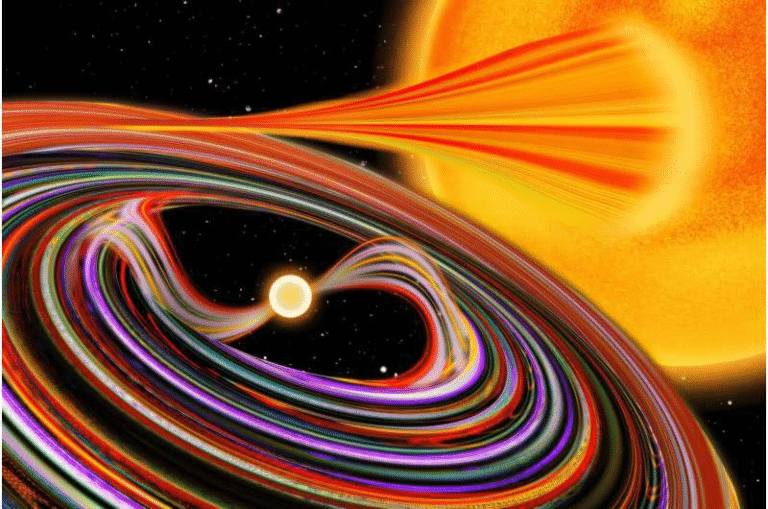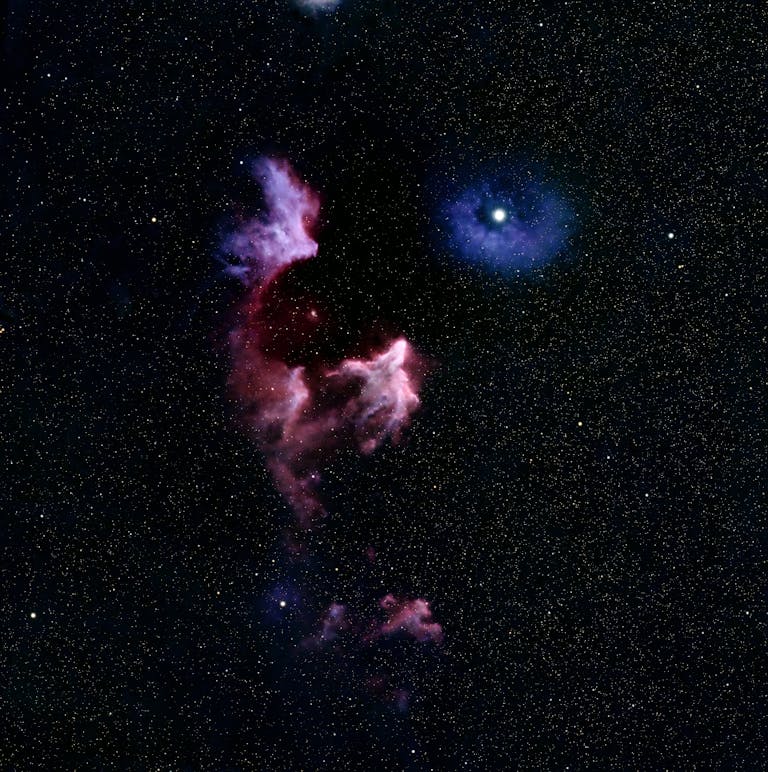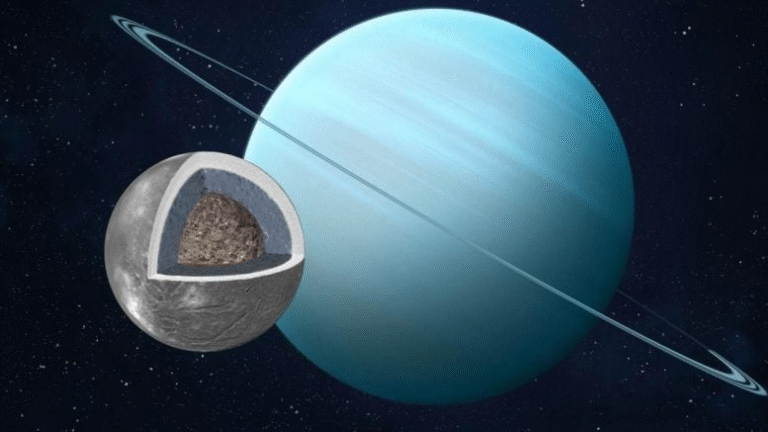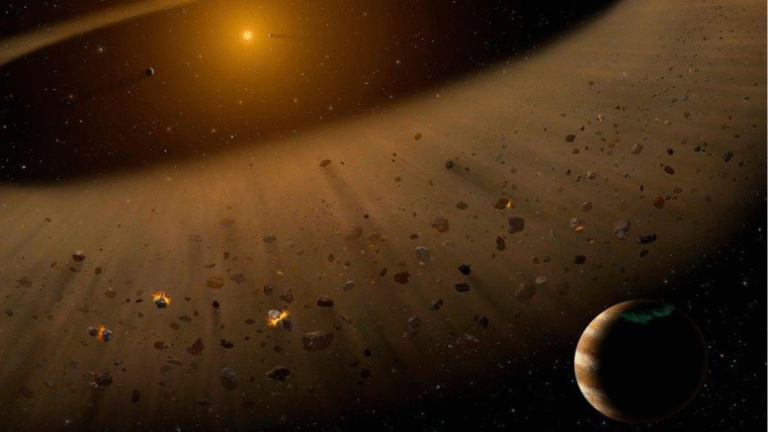Astronomers Uncover a Rare Supernova That Exposed Its Silicon Core
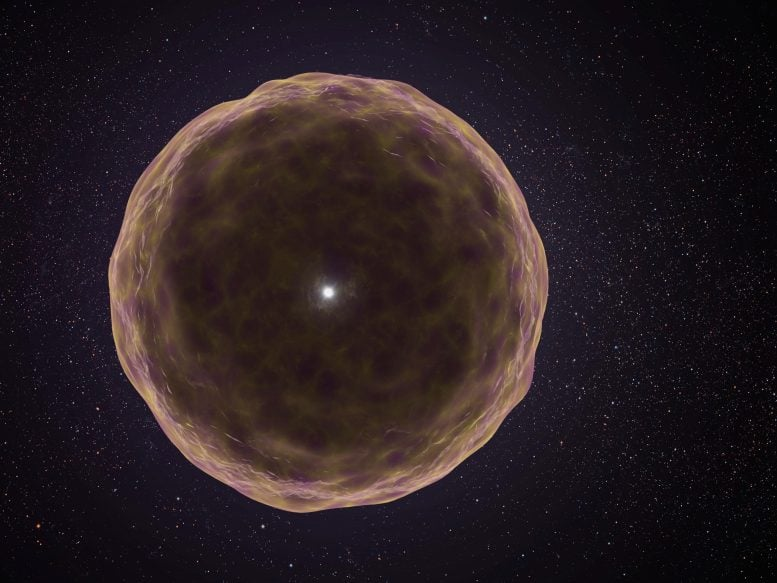
Astronomers have recently reported an extraordinary type of stellar explosion that has stunned the astrophysics community.
The event, officially named SN 2021yfj, revealed something that scientists had never clearly observed before: the deep silicon and sulfur layers of a star, stripped away before it finally collapsed.
This discovery, published in Nature on August 20, 2025, provides powerful new insights into how stars die, how they forge the elements, and how violent stellar interactions may shape the universe.
Where and When Was SN 2021yfj Found?
SN 2021yfj was discovered in September 2021 by the Zwicky Transient Facility (ZTF). Located about 2.2 billion light-years from Earth, this explosion stood out almost immediately from other known supernovae. Follow-up observations were conducted using some of the world’s leading telescopes, including the Keck Observatory in Hawaii.
The event occurred in a star-forming region, making it especially intriguing. Star-forming environments are places filled with gas and dust, where massive stars often live short, dramatic lives before collapsing into supernovae. But this particular case turned out to be different from the usual cosmic fireworks.
What Makes This Supernova So Special?
Most massive stars explode when they can no longer fuse elements in their core, producing what astronomers call a core-collapse supernova. These explosions usually expose the outer shells of the star—layers containing hydrogen, helium, or carbon/oxygen. That’s what astronomers typically detect in the light emitted by the debris.
SN 2021yfj, however, broke the pattern. Instead of seeing the expected outer elements, astronomers identified strong evidence of silicon (Si), sulfur (S), and argon (Ar) in the expelled material. These elements originate from deeper layers, far closer to the star’s iron core.
This makes SN 2021yfj an extremely stripped supernova—a rare phenomenon where not just the outer shells, but even the silicon-rich layers, are removed and observed. The stripping was so extreme that researchers proposed this may be the first example of a brand-new supernova classification, sometimes called Type Ien.
The Timeline of Fusion Inside Massive Stars
To understand why SN 2021yfj is remarkable, it helps to recall how stars generate energy and what happens as they age:
- Hydrogen fusion: Stars start by fusing hydrogen into helium. For massive stars, this can last millions of years.
- Helium fusion: Once hydrogen runs low, helium fuses into carbon and oxygen.
- Advanced burning: Larger stars go further, producing neon, oxygen, magnesium, sulfur, silicon, and finally iron in their cores.
- Time scales: Each burning stage gets shorter. Hydrogen fusion is long, but silicon fusion may last just a few days before collapse.
This “onion-like” structure means stars contain shells of progressively heavier elements. Normally, the inner shells (like silicon and sulfur) don’t have time to move outward before the final explosion. That’s why SN 2021yfj shocked astronomers: its silicon and sulfur layers were already outside the star when the supernova occurred.
How Did the Star Get Stripped So Deeply?
Here lies the mystery. Traditional stellar winds are not powerful enough to strip a star all the way down to its silicon shell, especially so close to the end of its life. So how could this have happened?
Astronomers propose a few possible explanations:
- A companion star: If the dying star had a close-orbiting partner, the companion’s gravity may have ripped away its deep layers in a dramatic act of stellar cannibalism.
- Violent pre-supernova eruptions: Some stars experience late-stage instabilities during neon, oxygen, or silicon burning. These instabilities could trigger massive ejections of material just months before collapse.
- Unusually strong mass loss: While stellar winds can strip hydrogen and helium, they generally cannot dig this deep. Something extraordinary must have enhanced the mass loss.
None of these scenarios alone fully explain the event, which means SN 2021yfj raises as many questions as it answers.
Observational Evidence and Spectral Data
The research team, led by Steve Schulze of Northwestern University, obtained detailed spectra of SN 2021yfj. These revealed:
- Strong features of silicon, sulfur, and argon.
- A thick shell of circumstellar material (CSM) around the star, composed largely of silicon and sulfur.
- A striking absence of the usual hydrogen and helium signatures.
The spectral data spanned wavelengths from 2,635 to 21,960 angstroms, offering a comprehensive look at the star’s chemical fingerprint. The data clearly showed that the expelled material originated from the deepest layers of the star’s fusion process.
Confirming Theories of Stellar Evolution
For decades, astrophysicists have modeled massive stars as layered structures. The outermost shells hold lighter elements, while the inner shells closer to the core contain heavier ones like silicon and sulfur. But until SN 2021yfj, no one had direct evidence of these layers being exposed before explosion.
This supernova effectively confirmed the “onion-shell” structure of massive stars. By observing silicon and sulfur in the circumstellar material, scientists gained confirmation that the deepest burning stages really do produce these elements—and that under certain conditions, they can be ejected into space.
Why This Matters for the Universe
The importance of this discovery goes beyond a single supernova. It connects directly to the story of how the universe makes the elements we rely on today:
- Carbon and nitrogen: Mostly produced by lower-mass stars like the Sun.
- Gold and other very heavy elements: Largely forged in exotic events such as neutron star mergers.
- Oxygen, neon, magnesium, sulfur, and silicon: Produced in massive stars and released during core-collapse supernovae.
This means that without supernovae like SN 2021yfj, the universe would lack many of the essential ingredients for planets and life. Observing the silicon and sulfur layers being expelled directly gives us a front-row seat to the process of cosmic element creation.
A Possible New Supernova Type: Type Ien
Because SN 2021yfj does not fit neatly into known categories, astronomers are considering a new classification. Traditionally, supernovae are grouped as:
- Type II: Contain hydrogen signatures.
- Type I: Lack hydrogen. Subdivided into Ia (thermonuclear), Ib, and Ic (stripped-envelope core collapse).
SN 2021yfj might be the prototype of a new branch: Type Ien, representing “extremely stripped” explosions that expose inner shells like silicon and sulfur. Whether this becomes an official classification will depend on whether more such cases are found.
The Bigger Picture: Open Questions
SN 2021yfj has opened exciting avenues of research, but it also leaves several puzzles:
- How common are these events? Was this just a rare accident, or are they more frequent than we think?
- What exactly caused the stripping? Was it a companion star, violent instabilities, or something we haven’t yet theorized?
- How do these explosions affect galactic chemistry? If silicon and sulfur can be ejected more efficiently than thought, our models of how galaxies evolve may need adjustment.
Additional Background: How Supernovae Work
For readers curious about the broader context, here’s a quick refresher on supernova science:
- Core collapse: When a massive star exhausts its fuel, its iron core collapses under gravity.
- Rebound: The collapse creates a shockwave that blasts through the outer layers, triggering the supernova explosion.
- Remnants: Depending on mass, the core becomes a neutron star or a black hole.
- Element dispersal: The explosion scatters newly forged elements into space, enriching interstellar gas for future stars and planets.
Supernovae are therefore not just dramatic events; they are cosmic recycling plants, seeding the galaxy with building blocks for new worlds.
Why This Discovery Resonates
At its heart, SN 2021yfj reminds us that the universe still has surprises. For decades, astrophysicists have refined their models of how stars live and die. Yet here is a real-world event that doesn’t quite fit the script.
By exposing the silicon and sulfur layers—the last shells before the iron core—SN 2021yfj gives scientists direct confirmation of theories, but also a puzzle about how those layers escaped.
In short, this single supernova gives us both answers and mysteries, making it one of the most exciting astronomical discoveries in recent years.
Reference: Extremely stripped supernova reveals a silicon and sulfur formation site – Nature (August 20, 2025)
